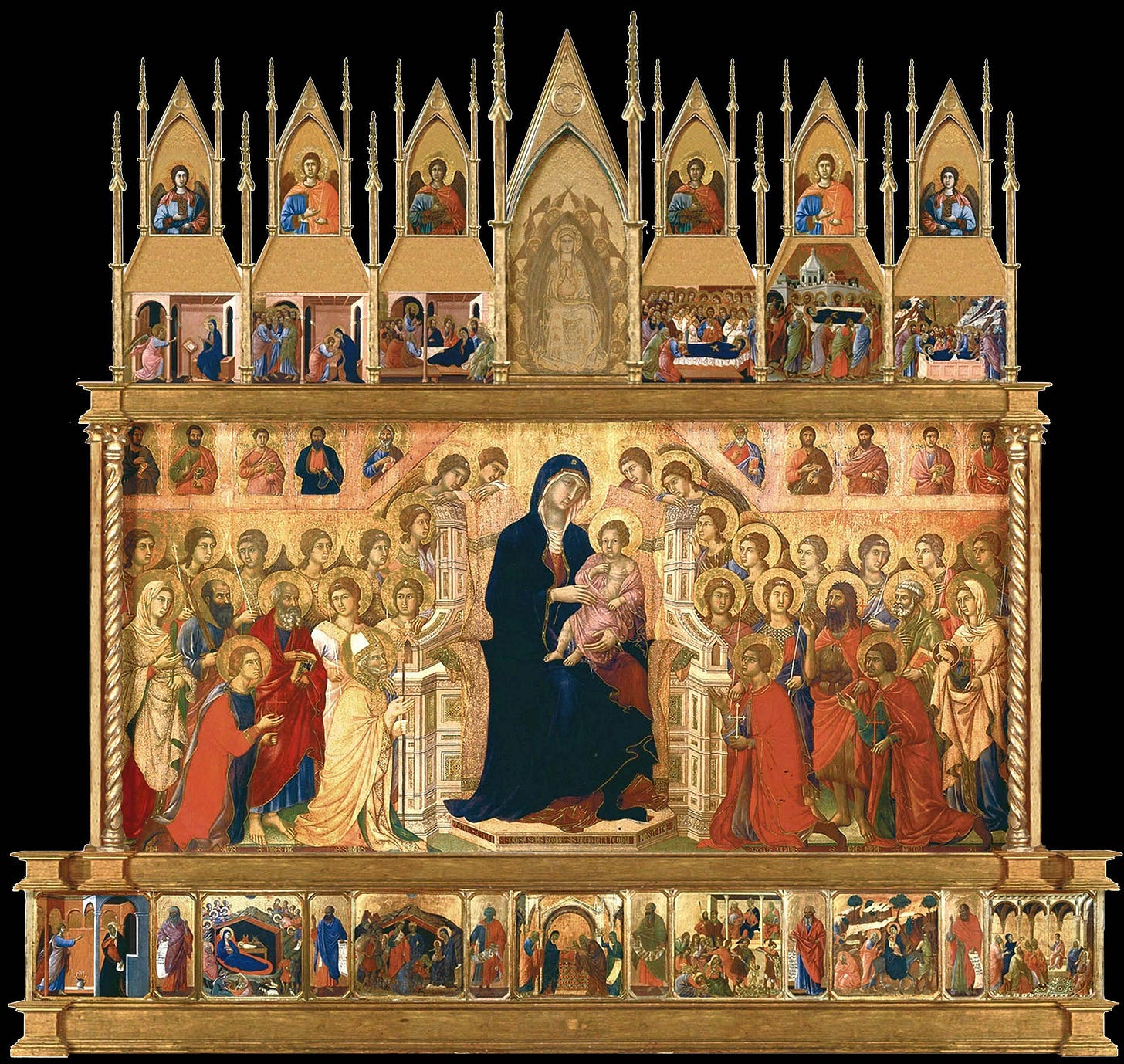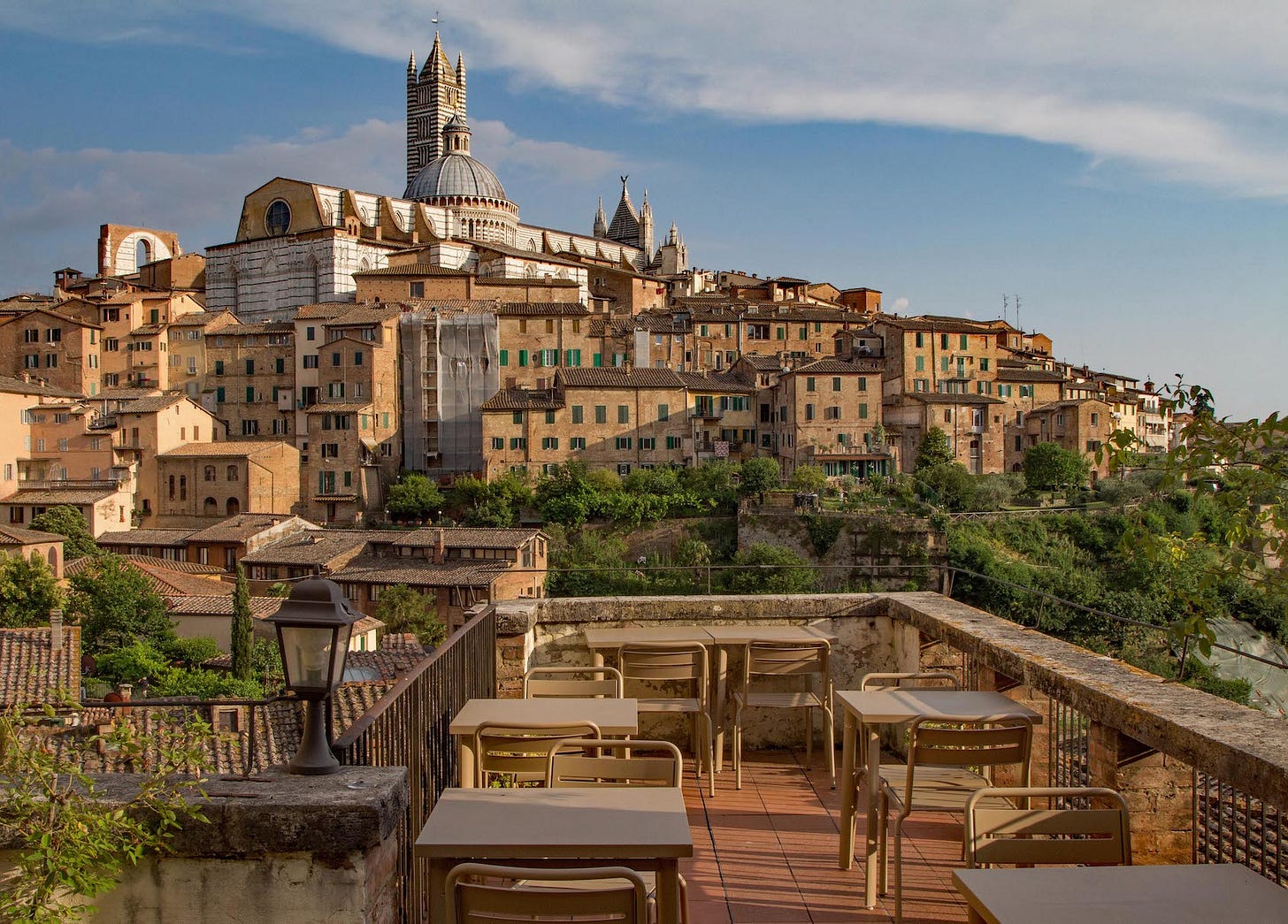The Injustice of Memory
How a forgotten masterpiece planted the seed of Western art as we know it...
The role of Italy in the evolution of Western art is rightly famed around the world. Ask a man to name a great painter or sculptor of the past, and invariably he will name an Italian.
He may cite Leonardo da Vinci or Michelangelo, Raphael or Caravaggio, or perhaps Bernini. It is, however, almost guaranteed that the artist named lived during or after the High Renaissance — the age when the figure of the artist and the celebrity began to intertwine. Yet Italian art was not conjured out of thin air in the Florence of the 1490’s, and the Italian peninsula was no stranger to masters or masterpieces in the centuries that preceded it.
One such master, who enjoys name-recognition in Italy and among those with a studied interest in Italian art, but whose name has otherwise slipped entirely out of international popular fame, was Duccio di Buoninsegna, who, two hundred years before the painting of the Sistine Chapel, blazed a far more fundamental trail, and grappled with a far more groundbreaking question — What really was ‘Western’ art, and how was it distinct from that of the East?
714 years ago this week, he offered a spectacular answer to this great question. For on the 9th June 1311, his masterpiece, the Maestà, was triumphantly paraded through the streets of Siena, before being installed at the high altar of the city’s magnificent cathedral, in an event of intense religious fervour and civic patriotism.
Today, we explore how Duccio charted a new course in Western art, take a closer look at his shining masterpiece, and consider the surprising reasons why you may never have heard of it...
Siena, City of the Madonna
At the advent of the 14th century, in few other places were men as content as they were in the city of Siena.
The medieval Tuscany of yesteryear had been an unforgiving arena, where a vast array of independent city states, in some cases only a few miles across, did battle either to preserve that cherished independence, or impede upon that of others. Coupled with the great Cold War of the Middle Ages, the struggle between the Papacy and the Holy Roman Empire and the Papacy, and their allied factions in Italy, the ‘Guelphs’ and ‘Ghibellines’ respectively, it was exceedingly difficult for any one city to eclipse the others.
But on the 4th September 1260, Siena appeared to have changed the course of history, when she and her vastly outnumbered allies utterly vanquished the armies of the aggressively expansionist Republic of Florence at the Battle of Montaperti, in the single bloodiest confrontation of medieval Italy.
The role of this victory in shaping the very identity of Siena cannot be exaggerated, to the extent that almost seven centuries later, in response to the advance of the Allied armies in Italy, the dedication ceremony was held once again in 1944. Even today, the proud Sienese might still taunt his rival Florentine with the memory of 1260 from the football stands.
Yet Montaperti was more than mere military glory. For on the eve of the battle, Sienese magistrate Buonaguida Lucari had led the people in solemn procession to the Cathedral. There, before the old image of the Madonna dagli Occhi Grossi, or ‘Madonna of the Large Eyes’, the keys of the city were symbolically offered to the Virgin Mary, in the hope of her protection.
Thus was Siena dedicated to the Mother of Christ, forging a bond that would forever bind the city to her faith, consecrated by triumph on the fields of Montaperti.
But in the years which followed, as Siena grew ever more prosperous and more powerful, so too did the desire to remake the city, especially following the reorganisation of the Republic into the rule of the Nine, or Noveschi, in 1287. As a powerful symbol of this ‘Divine Republic’, a new seat of civic government, the Palazzo Pubblico, was commissioned, and the construction of Siena’s mighty cathedral gathered pace.
Yet within the Cathedral, the lowly Madonna dagli Occhi Grossi, which had been painted almost a hundred years earlier by the mysterious Master of Tressa, was looking increasingly forlorn and out of place. Thus the decision was made to replace it with a piece more appropriate to Siena’s new prestige, thereby assuring the Queen of Heaven that the Sienese had not forgotten her role in their city’s prosperity, and that the bond remained strong.
To achieve this formidable task, the executive board of the Cathedral — the Opera dell’Duomo — turned to the city’s greatest painter…
Keep reading with a 7-day free trial
Subscribe to INVICTUS to keep reading this post and get 7 days of free access to the full post archives.





